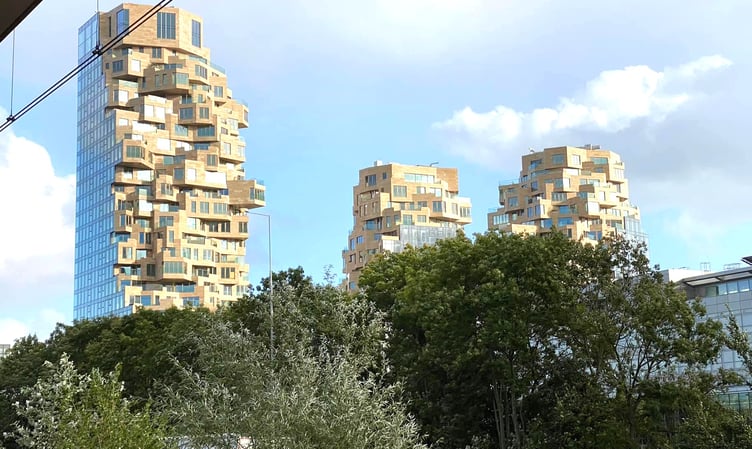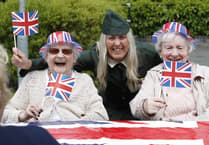Quite a Programme
If you look up the definitive of musical theatre, which I did, you will discover it to be lot of things: singing, the spoken word, dancing and acting, seamlessly blended into a cohesive whole. That is what the WAOS Musical Theatre will be doing soon.
Roles We’ll Probably Never Play is the title of a revue show with a twist; a brand new piece for WAOS Musical Theatre in which some of the best-loved musical theatre numbers, and some which are deserving of love, have been reworked and re-imagined into something completely new.
There are 35 musical numbers, including toe-taping songs from The Book of Mormon, West Side Story, Singin' in the Rain and Matilda. The musical numbers are from West End and Broadway shows that we all know. WAOS suggests you leave everything you know about these musicals at the door and get ready to see things in a brand new light.
Roles We’ll Probably Never Play runs from the May 1 to 4 at the Rhoda McGaw Theatre in Woking town centre.
Independent
I was sorry to learn of the death of John Bond, reported in this paper under the heading “Outspoken critic of council debt”. That he was. He was, therefore, outspoken about Woking's towers. I did not know him, but I enjoyed his haranguing of Woking Borough Council. He seemed so commonsensical.
About half a century ago I was asked, on a couple of occasions, if I would stand for a seat on the council. I said only if I could be independent. That finished that conversation, for I was informed that, as an independent, I would get absolutely nowhere; “the others” would cold shoulder me for sure. Good for John, and his fellow Independents for proving those naysayers wrong.
Yet I seem to remember that, in my youth, several councillors were independent. I do know that several of them ran their own businesses. This allowed them to make time for council work and it also meant they had a genuine interest in Woking, for it was their bread and butter.
Look at Henry Cawsey, for whom Henry Plaza is named. He had his electrical shop in West Byfleet and so really knew what was going on locally and probably knew many of the residents by name.
A shop, pub, or café, those are places to learn how the grassroots really feel about local affairs. There they will speak unguardedly, which is not always the case at councillors’ surgeries where the councillor may well lead the conversation.
I would suggest that these days many Woking residents would be hard put to name anyone who represents them on WBC, let alone know what they look like, or have been greeted by said representative.
Except, that is, in the run-up to an election.
Towering Indignation
The trees are greening up nicely now. Already it is hard to see the Towers of Woking from my home. I could, probably, see bits of them if I looked hard but why would I?
Did anyone really want them? Apart from someone with the gift of the gab, a snake-oil salesman. Do look up the definition of said salesman: I did and it is exactly the phrase I needed here.
The late John Bond, mentioned above, was set against the towers. Did he suffer from being an Independent as I also suggested in that piece? Toe the party line if you want to be heard. But then no one seemed to be shouting loud enough. Apart from John and his lot.
Now it is suggested that Woking could do with another tower block. Despite WBC saying it is against any more high towers, someone has suggested that as the town already has a proliferation of such monstrosities surely another one will hardly be noticed.
When writing about ASBOs, anti-social behaviour orders, I have pointed out that graffiti and litter, left on view, lead to others deciding they can leave it “because someone else has” and because “someone will clear it up” and if nobody clears it up, the whole mess will proliferate.
And now this thought has reached the, literally, dizzy heights of unwanted towers. Considerably more difficult to get rid of, despite the hundreds, if not thousands, of local residents who would cheerfully put on hi-viz volunteer jackets in order to do so. Graffiti begets graffiti. Litter begets litter. Tower blocks beget debt.
Did those who recklessly ordered the tearing down of anything old think that whatever replaced those buildings would make Woking look good? Look prosperous? Look any different from almost any other town which has let so-called planners loose?
On many occasions I have mentioned the very important-looking Victorian buildings, visible from passing trains, which housed Woking’s Public Hall, which later became the Grand Theatre; Woking Urban District Council Offices; the Constitutional Club; and the Methodist Church and are now somewhere under a block of glass and nothingness.
And now the NatWest Bank, on the corner of Church Path and the High Street, is to close. For many years it was the home of the Westminster Bank and looked like a bank. I believe it was built as a bank.
Will this imposing building be pulled down along with most of the rest of the High Street – one of the few remaining vestige of Victorian buildings left in Woking which now calls every new building after Victoria, despite having wiped out every sign of buildings erected during her reign from this town.
I fear the height of folly has not yet been reached.
Must it be Ugly?
Some years ago, how time does fly, a friend and I were looking at several parallel vertical lines over Woking. These, we knew, were to become the Towers of Woking. Why so many, we wondered. Who would live there? We had been told the flats would quickly be filled, bringing in rent for WBC coffers.
Where would he residents keep their cars? we wondered. Wonder no more, we were assured, for all the residents would work in London, an easy commute from Woking station, and so would not require cars.
But how about visiting relations? They relations do not always live close to railway stations on a line to Woking. They will hire cars, we were told; I shall not say that we were reassured.
How does one rush down to Somerset to visit a suddenly ill grandparent? Oh, you can always hire a car! What, at 3am on a Sunday?
We then discussed towers in general and admitted that some could look quite good. There is one we have seen in the South of France on which each floor is stepped up, so as to leave a wide balcony, or small garden, at each end. And it is built on a pleasing curve.
We have seen groups of towers built at various heights which don’t look too bad. I am not suggesting a ziggurat, although an attempt at replicating the Hanging Gardens of Babylon might bring tourists to Woking. But have regard for the fate of the Tower of Babel.
What a pity Woking town is no longer twinned with Amstelveen for that Dutch town is a suburban part of the Amsterdam metropolitan area.
Visitors from Woking and, indeed, from the whole world, are likely to see the pleasing, exciting and, sometimes, amusing, array of skyscrapers near Schiphol Airport. People will drive out of their way to see them. Its a bit like driving down the A303 and warning passengers to look out of the right-hand windows, for there is Stonehenge coming into sight! Why couldn't Woking have something like that?
May I See You?
In the words of the song: “Then April cried and stepped aside and along came pretty little May.” Or so Rodgers and Hammerstein had it in their musical Carousel.
I do hope they were right about wet April stepping aside for May. The Horsell Scouts and Guides May Fayre, on the Wheatsheaf Green on May Bank Holiday, that is May 6, would be delighted to have the weather cease its weeping.
Whatever the weather there will be plenty to do and see, so do, please, get along to the Fayre. I shall be there and hope to see you!
Lost Sheep?
In all my childhood years of playing on Horsell Common I never saw a sheep. But I did know of a pond, ringed with yellow flag irises, which sometimes died down to mud , but it was always there. In such an obvious place.
If you walked along Chertsey Road, on the A320, from Woking, on the left-hand side, as soon as you had crossed the canal there was a steep step down from the road. Almost immediately on your right you would have come across what we knew as the Sheep Dip or Sheep Wash. But why?
I have never seen a sheep on the common. Deer, yes. Belted Galloway cattle, yes, though not on this part of the common. So where were the sheep? Who owned the sheep? What became of the sheep? Who has Bo Peep’s phone number?
Reader Nigel Searle remembers playing on the common years ago. He is not looking for sheep, but a missing link, between the old path and the new system of made-up paths.
He writes: “Another oddity of the site, at least in my view, is the lack of a made-up path leading up past the ‘Sheep Dip’ to the Chertsey Road canal bridge.
“The original, longstanding, path is still there, but in order to reach the new ‘dry’ path system it is necessary to negotiate a short and, at least in bad weather, wet and muddy area.
“A considerable amount of money must have been spent to allow the construction of the traffic island to help with crossing Chertsey Road where the footpath meets it, so why the ‘missing link’ ?”
That traffic island is quite a bit farther along towards the Six Cross Roads to link up with the Bedser Trail.
I admit that I also looked for that path, known to Nigel and to me and, doubtless, to many others but the area was very muddy and although I had on good walking shoes I decided that this was one for the wellies.
It is strange that the link is missing, for if you have been walking on the towpath on the other side of the bridge you can cross to the northern side at that point. Just that one muddy link.
Does anyone have any ideas on the matter? Does anyone know what became of the sheep?


.jpeg?width=209&height=140&crop=209:145,smart&quality=75)


Comments
This article has no comments yet. Be the first to leave a comment.